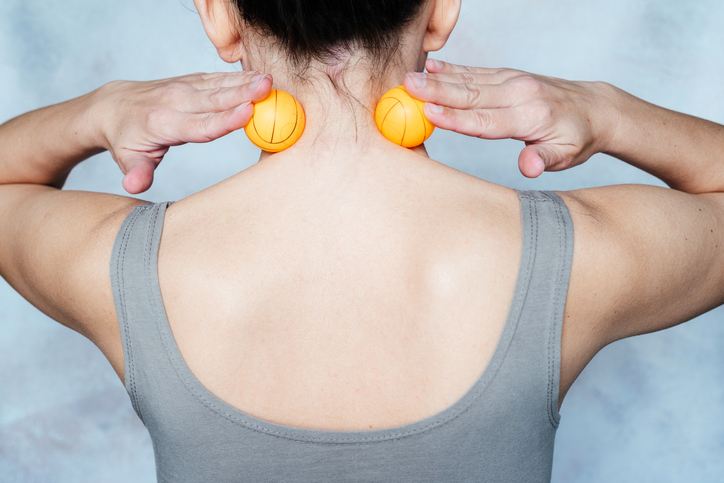Pain
Conventional Medical Treatments for Myofascial Pain Syndrome

What is myofascial pain syndrome?
Myofascial pain syndrome is a chronic pain condition in which sensitive bumps or knots (trigger points) develop in one or more muscles. Pain is felt when pressure is applied to these trigger points. The pain is often felt at the trigger point; however, it can also be felt elsewhere in the body when pressure is applied to the trigger point, which is called referred pain. The pain associated with myofascial pain syndrome lasts longer than typical muscle soreness.
Several conventional treatment options are available to help reduce the pain and muscle weakness associated with myofascial pain syndrome. These options include medications, physical therapy, and needle procedures.
Medications
Several types of medications can be used to treat the symptoms of myofascial pain syndrome, including the following:
- Over-the-counter pain relievers, such as nonsteroidal anti-inflammatory drugs (NSAIDs) or acetaminophen
- Prescription pain medications, if needed
- Muscle relaxants to decrease muscle spasms
- Anticonvulsants, such as gabapentin or pregabalin, which can reduce pain and decrease muscle spasms
- Tricyclic antidepressants, which may help reduce pain and improve sleep
- Sedatives to improve sleep, if needed
Physical therapy
Physical therapy can help stretch and strengthen the affected muscles. A physical therapist may use a technique known as “spray and stretch,” in which a trigger point is sprayed with a topical numbing solution before it is stretched. Massage therapy, posture training, or transcutaneous electrical nerve stimulation(TENS therapy) may also be included in physical therapy sessions.
Needling techniques (Header 1)
Needling techniques, including dry needling or trigger point injections, may also be used to treat myofascial pain syndrome.
- Dry needling
Thin needles are placed in and around a trigger point to break up muscle tension and increase blood flow, which can reduce pain. This technique does not involve any medication. - Trigger point injections
A numbing medication (local anesthetic) or saline is injected into a trigger point to help relieve pain.
Therapeutic ultrasound
This therapy uses sound waves from an ultrasound machine to heat and relax the affected muscles. This process increases circulation to the muscles, which promotes healing. Therapeutic ultrasound is especially beneficial when used before stretching.
Treatment duration varies widely from person to person, taking anywhere from days to weeks for symptom relief.












